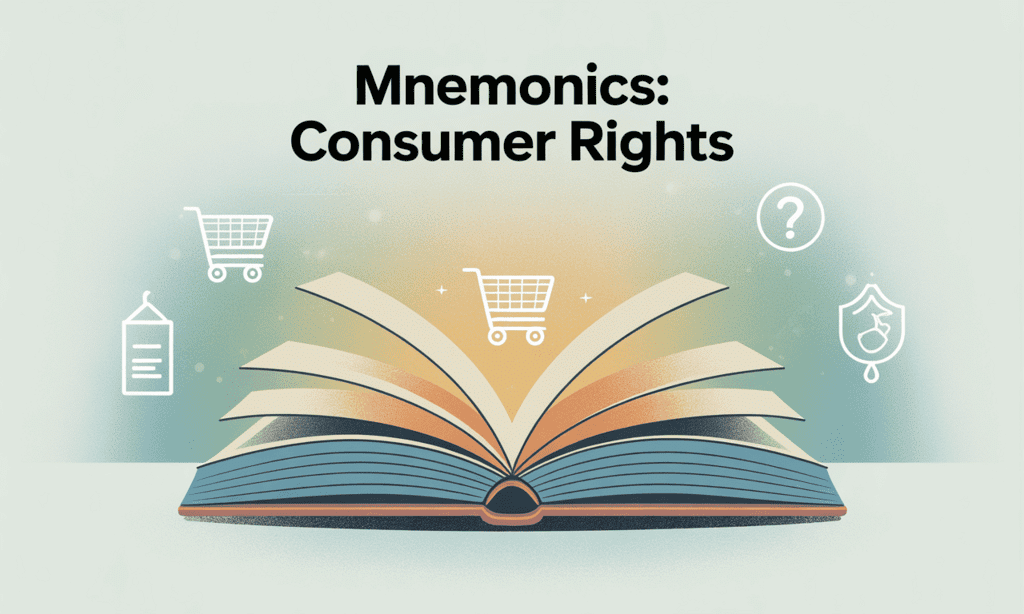Mnemonics: Consumer Rights | Social Studies (SST) Class 10 PDF Download

1. Consumer Rights
Trick to remember: "S-I-C-R-R" (Say: Sick-RR)
S – Safety: Right to be protected from harmful goods/services.
I – Informed: Right to know product details like price, expiry, risks.
C – Choice: Right to choose freely, without pressure.
R – Redressal: Right to complain and seek compensation.
R – Representation: Right to be heard in consumer courts.
2. Consumer in the Marketplace
Trick: "M-R-E" (Like the name Mr. E)
M – Market Role: We are both producers and consumers.
R – Rules Needed: For fair treatment and safety.
E – Exploitation: Happens without rules, especially to workers and small farmers.
3. Exploitation in the Market
Trick: "BAD"
B – Black marketing: Selling goods at unfair prices.
A – Adulteration: Mixing low-quality or harmful substances in products.
D – Deceptive practices: Cheating by using false weights, hidden charges, etc.
4. Consumer Movement in India
Trick: "SHARP"
S – Shortages: Food shortages caused hoarding.
H – Hoarding: Storing goods to raise prices.
A – Awareness: Articles and exhibitions created awareness.
R – Ration Shops: Consumer groups checked unfair practices.
P – Passenger Transport: Complaints about overcrowding.
5. Consumer Courts – COPRA Law
Trick: "D-S-N" (District – State – National)
District Commission: For cases up to 1 crore rupees.
State Commission: For cases between 1 crore and 10 crore.
National Commission: For cases above 10 crore.
Consumers can appeal from district to state, then national level.
6. How to be a Smart Consumer
Trick: "AIM"
A – Ask for information: Always check bills, expiry dates, MRP.
I – Information Rights: Use RTI Act to get government info.
M – Make complaints: Go to forums or courts if cheated.
7. Taking the Consumer Movement Forward
Trick: "DAY"
D – December 24: National Consumer Day (COPRA passed in 1986).
A – Amendments in 2019: Online shopping and service issues included.
Y – You must be aware: Rights help only if you use them.
|
66 videos|614 docs|79 tests
|
FAQs on Mnemonics: Consumer Rights - Social Studies (SST) Class 10
| 1. What are the main consumer rights that every individual should be aware of? |  |
| 2. How can consumers exercise their rights effectively? |  |
| 3. What is the significance of the right to seek redress in consumer rights? |  |
| 4. Can you explain the role of government in protecting consumer rights? |  |
| 5. What steps can consumers take if they believe their rights have been violated? |  |


















